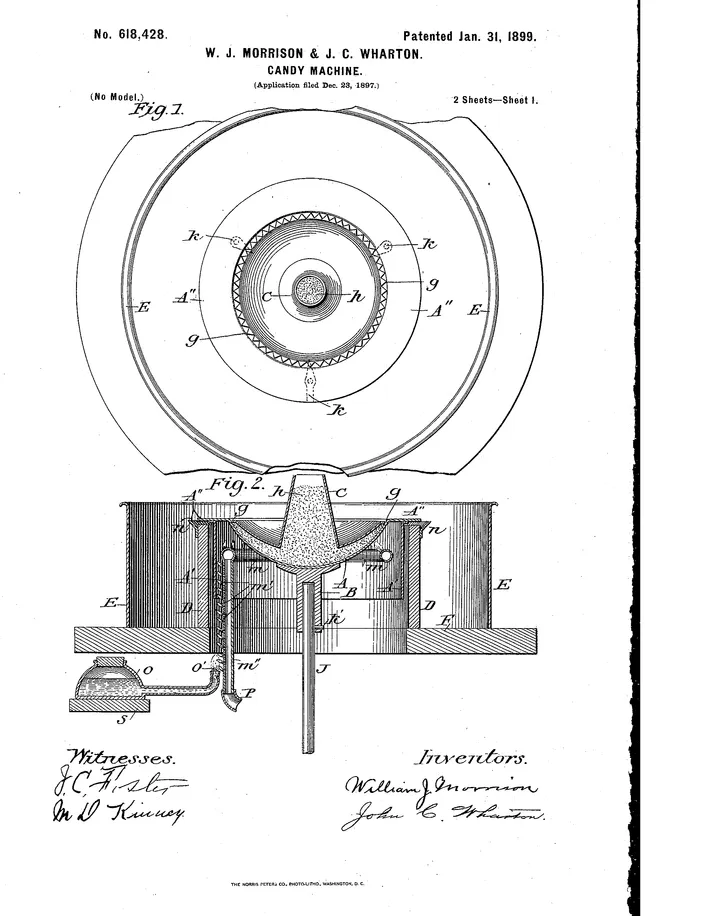Click here to read the Spanish version.
It glitters in the middle of fairs, circuses or carnivals, sculpted on a stick. The sticky cotton candy has become one of the most coveted nostalgic sweets in the world for its texture, flavor and the hyper-stimulating effect it produces. But before acquiring the usual shape and popular status that we all know, it had a different shape and recognition.
Let’s start with the origins: where, when and how did the idea of transforming sugar into such a fun creation come about? The idea of spun sugar is said to have existed since the 15th century in Italy. There, cooks would develop a technique consisting of working on vats of melted sugar, and spinning them by hand using a fork and a kind of handle.

In the Modern Age, given the high cost of sugar in Europe, spun sugar was far from being a popular sweet: it was reserved for the upper echelons of royalty. Henry III of France, for example, would be presented on his trip to Venice with a tray containing more than 1,000 different pieces of spun sugar.
First cotton candy machine
Spun sugar would then descend from that exclusive platform to a more earthly plane, entering popular culture thanks to the cotton candy machine. The reality -although it may seem ironic- is that it was a dentist who invented it. And that was William James Morrison, a dentist and inventor from Nashville, Tennessee, known for devising the device that eliminated much of the manual labor associated with pre-spinning sugar.
In 1897, he and his friend, confectioner John C. Wharton, would team up to make the machine they would christen the ‘electric candy machine,’ which melted sugar in a rotating central chamber. It then used air to blow the melted sugar through a wire grid into the surrounding metal bowl to produce the candy we now know so well.

The machine and the candy it produced -called ‘Fairy Floss’ at the time- were first introduced in America at the 1904 St. Louis World’s Fair, extended over six months during which the candy was sold in boxes at 25 cents a piece. Such was the success of their debut that Morrison and Wharton sold a total of 65,655 boxes; in turn leaving a lasting legacy in history.

